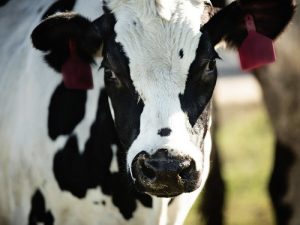According to itpnews, the primary factor that causes hoof disease in livestock is genetics.
In the new research conducted by the scientists of Martin Luther University and Georg August, Germany, genetics has been considered the main cause of interdigital hyperplasia in cattle hoofs.
This research team, led by Professor Hermann Swalve, believes that this disease is more common in some genes and strain.
Professor Swalve, professor of animal breeding at MLU University, says: “To determine whether a specific gene is involved in a disease or not, several factors must come together.”
The findings of this research group have been published in the prestigious journal Frontiers in Genetics.
The reason for the success of Prof. Swalves’ research group is that they have spent many years researching information about large cattle in Germany.
In their research on a farm, they observed that interdigital hyperplasia was common among the cows of this farm.
The research results of this group show that interdigital hyperplasia disease occurs in a period between large German cattle and it is more likely to occur in old cattle.
According to Prof. Swalves, in interdigital hyperplasia, a small hoof grows between the hoofs of the cow and creates a gap between the two hoofs.
This factor causes lesions to form in the skin and causes the entry of pathogenic bacteria, and in addition, it causes disturbances in the animal’s walking, and as a result, the life of the animal is shortened.
The professor also said: We did a lot of research before to find the gene that causes this disease, but the sample that has this disease was not always available enough.
But we were able to complete our research by finding a farm where 60% of its animals were infected with this disease.
In an extensive genomic study, this research team examined and compared 45,000 small segments of DNA in the genomes of healthy and diseased cows.
They discovered two factors related to this disease.
One of these factors was the amino acid tyrosine kinase receptor gene or ROR2.
Professor Swalves said: By comparing our findings with human genetic studies, we found that this gene is the cause of infection in humans as well.
Also, another research team at the University of Gottingen, under the guidance of Professor Breing, was able to prove that the ROR2 gene is effective in the development of interdigital hyperplasia disease in cattle hoofs.
In further research, Professor Breing was able to prove that this defect causes changes in the concentration of proteins.
He said: As soon as we were able to discover that this mutation affects the appearance of the gene, we were also able to explain how it affects and relates to the disease.
For the first time in 1952, Dr. Richard Gotze, a veterinarian from Hannover, Germany, who is also internationally famous, discovered the involvement of genetics in interdigital hyperplasia.
Although this huge discovery did not lead to animal breeding, MLU researchers reported that the disease could be controlled through breeding.
Principles of hoof trimming, hoof diseases, hoof trimming, Hyperplasia






































